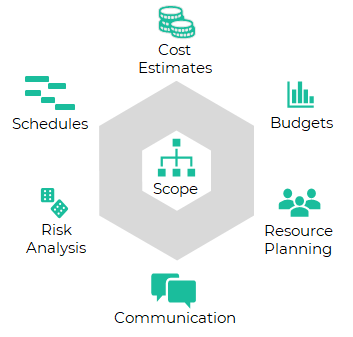
Data-driven project management



Data has become the source of success for almost all businesses. Those who can leverage it properly are those who can gain a lot of competitive advantage
Data-driven project management
It is no secret that many of the decisions we take in our daily and professional lives are not backed up by facts or data. Decisions are rather influenced by our intuition, subjective perceptions, the opinion of dominant people, our own experiences, you name it.
For example, we see many companies where priorities are still assigned to projects based on the loudest voice. While it is not per definition wrong to have decisions influenced by any of those factors, it might result in sub-optimal decisions.
Data-driven project management promotes decisions that are based on solid and objective data.. At Proove, we believe that intelligent data analysis will play a critical role in the success of projects.
Learn MoreThe old way
Data is clearly of utter importance for data-driven project management. The availability of raw data is mostly not a problem as projects generate lots of data, such as material quantities, activity durations, cost estimates, risk events and much more.
But how is this data processed? Well, in the old way, projects are managed based on files and documents. Lots of them. A project manager or engineer then manually creates a new file which gets filled with static data along with some description or context. This way, the raw data becomes information and is as such distributed to numerous stakeholders.
File-based project management has some clear disadvantages:
- Documents are always static snapshots at a specific time while the underlying data is dynamic.
- Adding data to documents involves manual actions which are error-prone. Correct data might be made incorrect through human errors.
- The number of documents grows rapidly.
- Important project data is included in multiple files and documents. This is obviously an inefficiency as such, but the bigger problem arises when these interconnected documents need to be updated.
- After some time, many versions of the same document exist and some people might look at outdated data to make a decision.
- Different data sources are stored in different files and documents. Think for example about a cost estimation in Excel, a schedule in MS Project and your risk register in a self-developed access database. These files are not easily connected and functional silos might arise.
It is fair to conclude that the old way of managing data is error-prone, slow, and leads to ineffective project management.
The better way
The above problem statement is not new. When I started my career in project controls more than ten years ago, we essentially stated the same issues. What changed, however, is the current advancement of technology which now allows to tackle those issues and to enable proper data-driven project management.
Data can nowadays be stored and processed in openly accessible databases, either in the cloud or locally. You won’t have to worry about searching for the latest version of a document since the data you are seeing is always up to date. There is a single version of the truth.
Also, project data is increasingly seen as heavily interconnected. Time data, cost data, resource data, risk data etc. are all having an impact on each other. Next-generation project management tools (like Oracle Primavera Cloud) are no longer pure schedule engines, but integrate many different data sources in a single database. A good alternative is to develop interfaces between several (legacy) databases. The result is the same, the data model becomes interconnected and the interactions between time, cost, resources and risks can be analyzed.

Now that we have the right integrated data model, we can develop interactive dashboards and create reports with a click of a button!
Data will be analyzed and presented in a decision-supporting format. The intention is not to replace the human intellect, but rather to speed the process and to allow data-driven project managers to focus on what they do best, taking decisions based on data-driven insights.
Reaching this level of data management is often not as time consuming and costly as one might think. Powerful reporting can already be obtained without putting too much effort in it. This blog post shows an example.
Final words
As projects are becoming more complex and the market is becoming more competitive, it is essential that companies stay ahead of the competition. Hence, with the advancement of technology, there are many means available to support better project management practices and that is precisely what we intend to do at Proove.
Want to now some more? Read the longer version of this blog "Data-Driven Project Management Explained" by co-author Abdallah Baydoun,

Being data-driven is above all a mentality switch for project managers. It entails the willingness to report the true project performance at any time.



